Hildreth Meière Documentary Series - Watch Trailer
Hildreth Meière Documentary Series - Watch Trailer
Commissioned by: Smyth, Urquhart & MarkwaldMedium: gesso and metal reliefExecuted by: Louis RossRelocated to: National Museum of American History, Smithsonian Institution
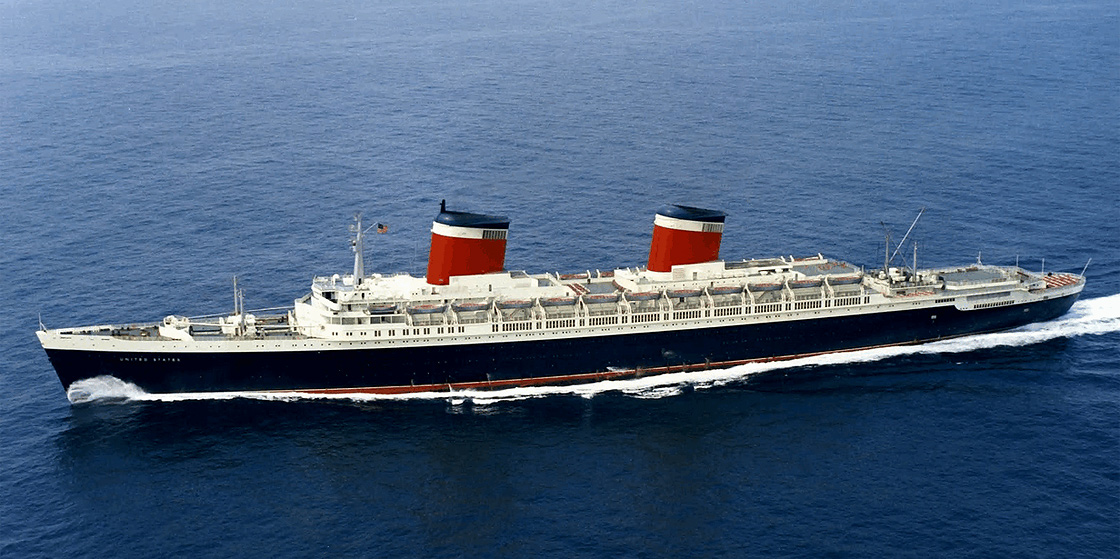
S.S. United States under sail
When she was designed, the S.S. United States was a ship of superlatives. Partially financed by the Navy and designed by Gibbs & Cox, she was the fastest ship ever built in America and also the safest. Constructed to be lightweight and fireproof, the rivets, railings, interior walls, and lacquered furniture were all constructed in aluminum. In addition, the entire ship was air conditioned.
The all-female interior decorating firm of Smyth Urquhart & Markwald hired Hildreth Meière and Austin Purves as consultants to create an art program and select artists to decorate the S.S. United States in a manner that would best represent the country. This was the second time Meière worked with them. In 1939 the firm had commissioned Meière to design decoration for another Gibbs & Cox ship, the S.S. America.
According to the press release issued by the S.S. United States:
Homogeneity in the entire decorative arts scheme of the great ship was desirable, they felt, and in order to achieve it within the fireproof and weight limitations, the supervisory help of the two artists in this particular phase seemed essential. Accordingly, in addition to contributing work of their own, Mrs. Meière and Mr. Purves advised the decorators in the selection of other artists and also served in a critical capacity on the work submitted.1
Among the artists whom Meière and Purves selected to decorate the ship were Louis Ross, Gwen Lux, Peter Ostuni, Charles Lin Tissot, William King, Charles Gilbert, and Raymond Wendell:
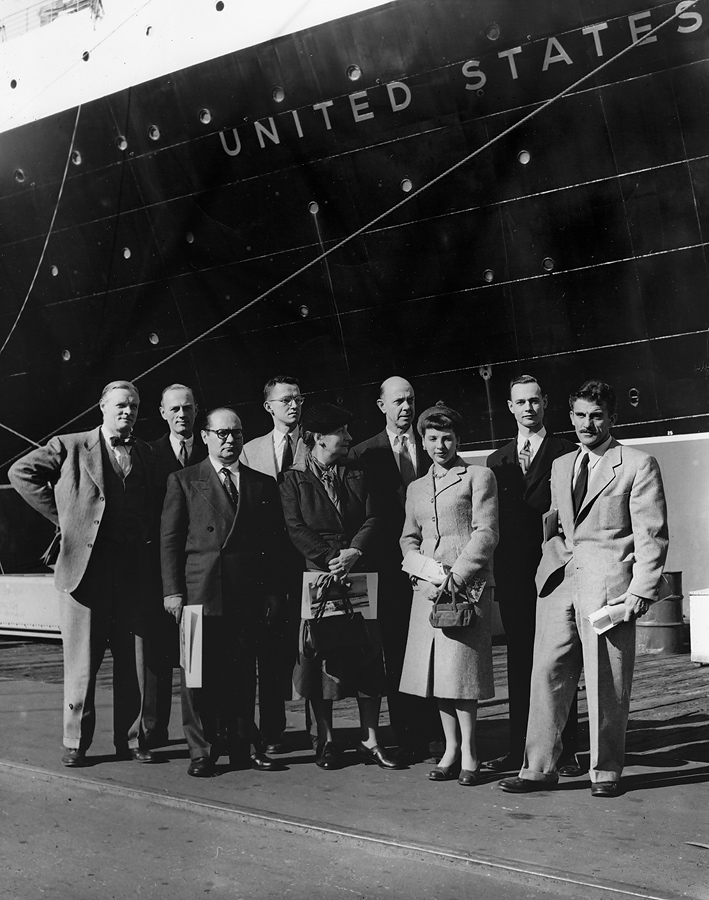
Front row, left to right: Louis Ross, Hildreth Meière, Gwen Lux, Peter Ostuni; back row, left to right: Austin Purves, Charles Lin Tissot, William King, Charles Gilbert, Raymond Wendell
The decorating firm issued a statement about the importance of “character” in the work by the various artists:
Because the unquestioned beauty of the [S.S.] United States is the result of her honest expression of function, it was decided that it was this ‘character’ rather than any ‘style’ which was to be striven for, and the artists have approached their work as individuals through their media and the nature of the subject matter, rather than through any conscious idiom, ‘conservative’ or ‘modern.’ 2
Smyth, Urquhart & Markwald also chose an American decorative theme:
The overall theme chosen for decorative art was a reflection of life in the United States appropriate to the greatest ship ever produced in this country. Emphasis was to be on Americana and the natural elements. Consequently such subjects as the Mississippi River, Navajo Indian sand painting, old American glassware, aquatic life along the country’s shores, and figures symbolic of the American philosophy were selected.3
To comply with the requirement that the artwork be fireproof, the artists worked in the mediums of glass, metal, and enamel.4
In addition to her role as a consultant on design and color, Meière created a mural, The Mississippi, Father of Waters, for the forward wall of the cabin class lounge. The “tree-shaped” map represented Meière’s sixth commission to decorate an ocean liner. It was executed by Louis Ross in white and gilded raised gesso on silver leaf panels, with the names and symbolic representations of cities along the branches of the Mississippi indicated in gold relief:5
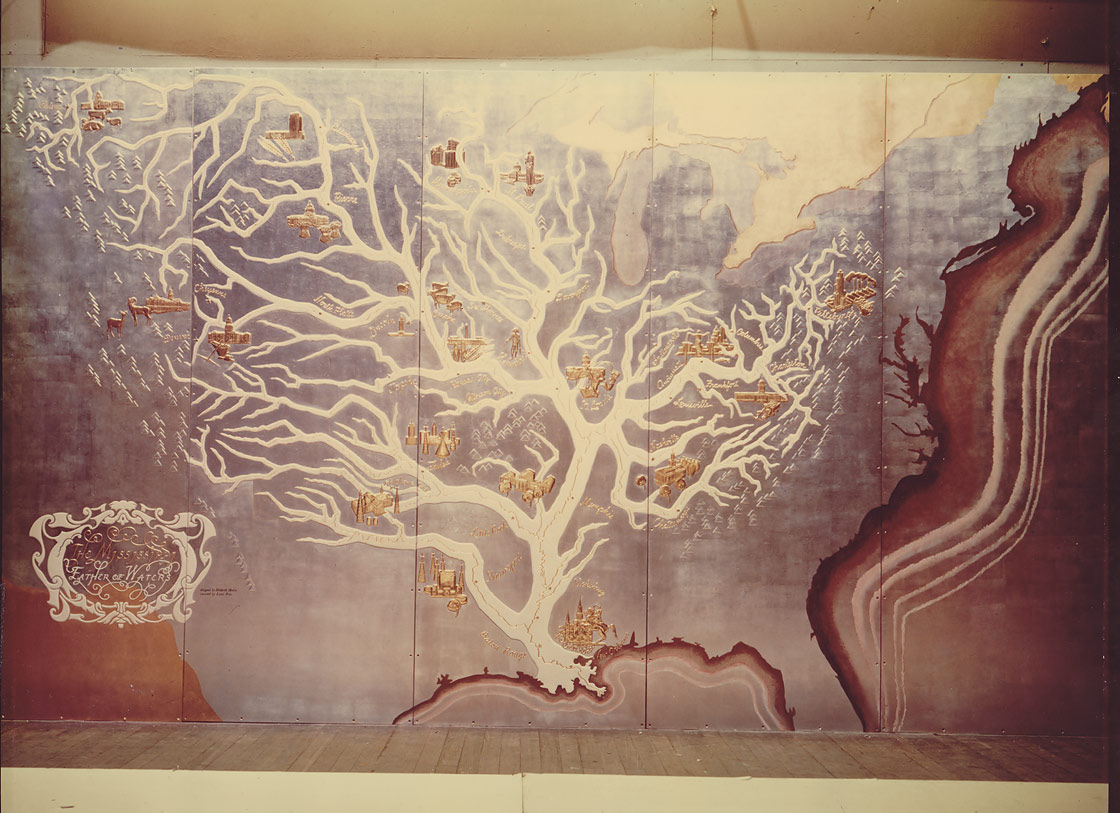
The Mississippi, Father of Waters prior to installation
William E. Blewett, executive vice president of the Newport News Shipbuilding and Dry Dock Company where the S.S. United States was built, explained how the artists’ decoration of the aluminum wall panels was handled:
. . .we have to tool and fit the panels and get them into place, and then take them all out and ship them off to the decorators for their murals and other art treatments. . . . Then they come back and must be reinstalled.6
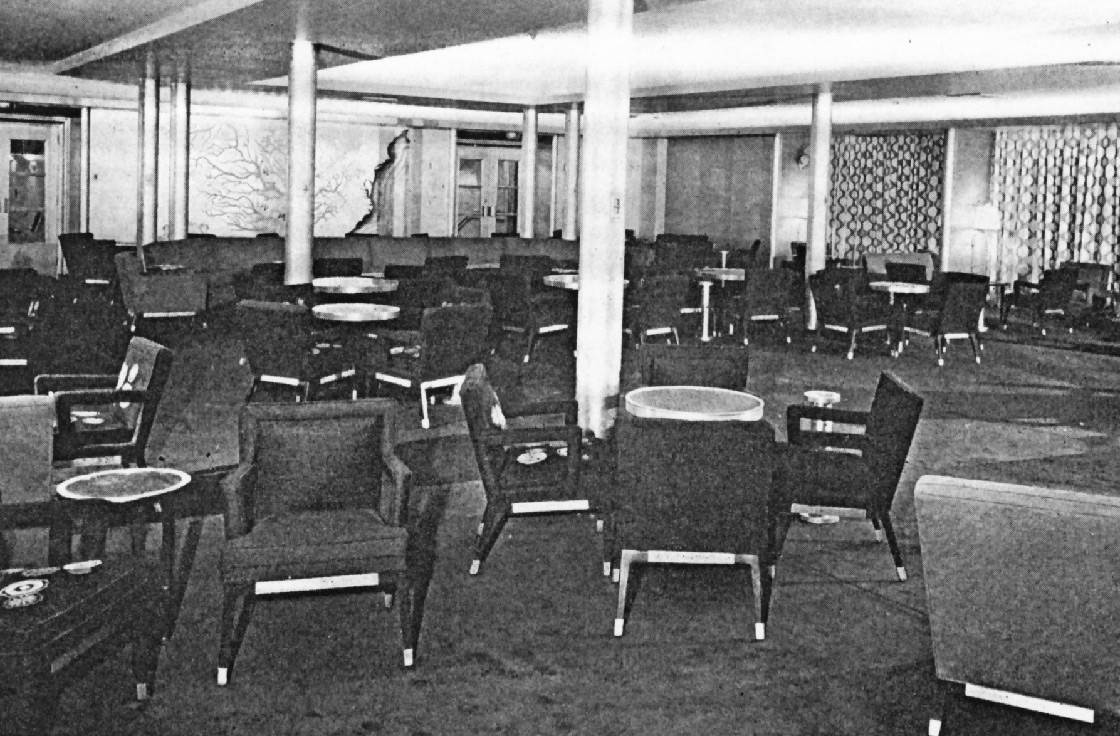
Cabin class lounge with Meière’s Mississippi, Father of Waters
The completed cabin class lounge had aluminum-leaf wall panels, five of which were decorated in silver leaf with Meière’s map of the Mississippi:
The walls of the cabin class lounge are finished in aluminum leaf with a pinkish beige transparent glaze, while various shades of solid red have been used for the larger upholstered pieces. Curtains are modern damask in pink-beige and off-white and a gun metal carpet covers the floor which has a stage at one end, and a 17 by 26 foot dance floor in the center section. A mural designed by Hildreth Meière depicts the Mississippi and its tributaries. Lighting is chiefly indirect and on dimmers, with some concealed lighting of the curtains, bracket lamps and down lighting of the decorative panel.7
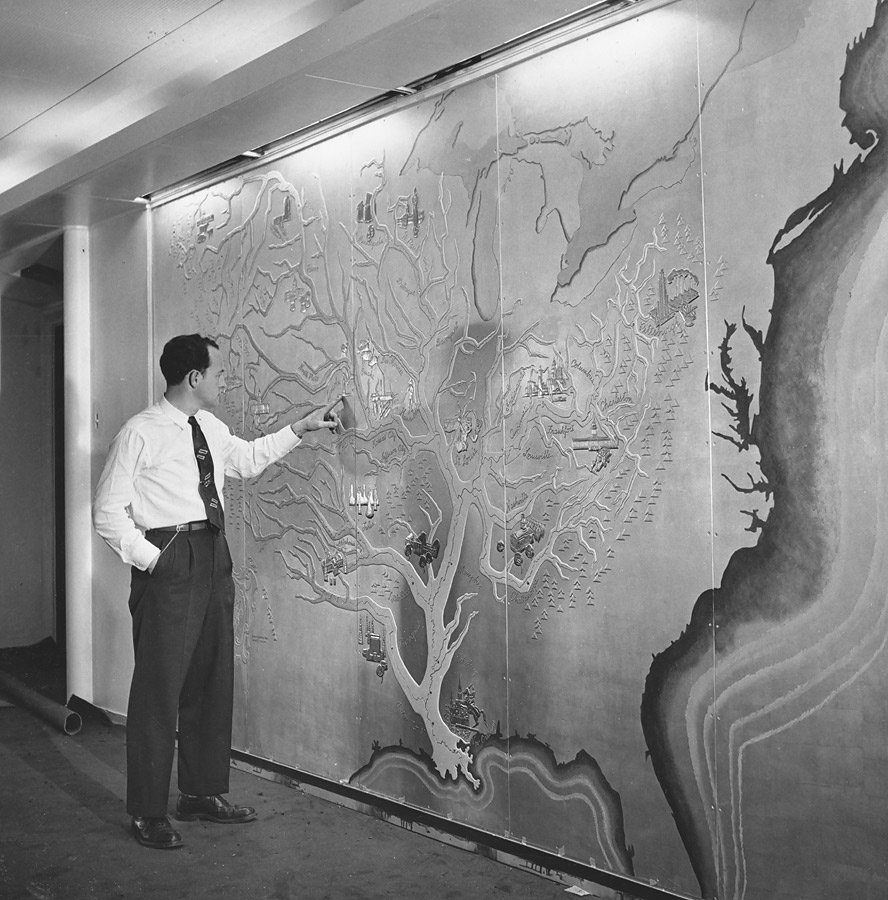
The Mississippi, Father of Waters during installation, with lighting in place
The S.S. United States was taken out of service in 1969 and is currently docked at Pier 82 in Philadelphia. Structurally sound, the ship is maintained by the S.S. United States Conservancy, a not-for-profit dedicated to the reuse and redevelopment of the liner.
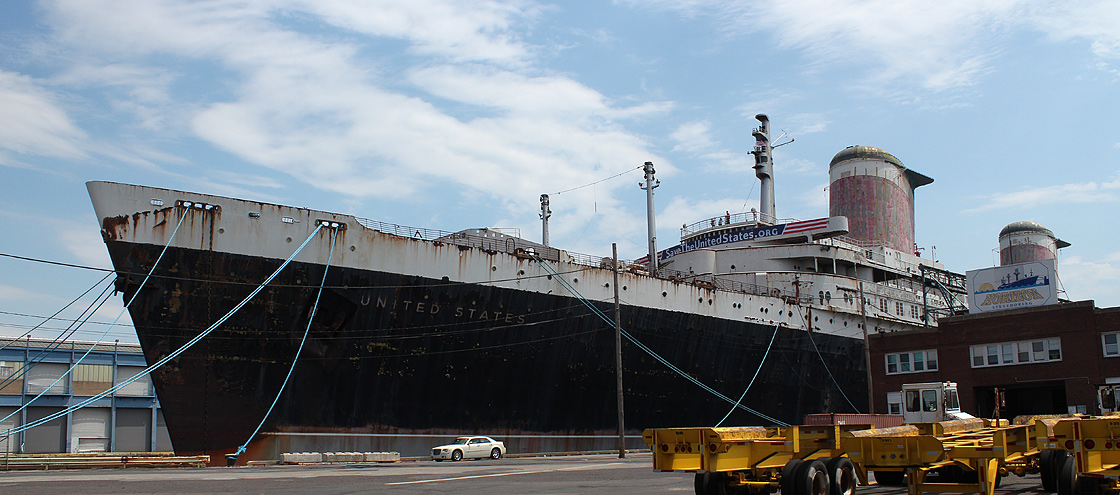
S.S. United States at Pier 82, Philadelphia, PA
Meière’s Mississippi, Father of Waters has been relocated to the National Museum of American History. At some point the map was repainted in shades of green with red highlights, and it no longer represents Meière and Ross’s original design and gilding. The map is not on public view.
“S.S. United States Press Release,” April 30, 1952, p. 3, Hildreth Meière Papers, Archives of American Art, Smithsonian Institution, Washington, DC.
Smyth, Urquhart & Markwald, “S.S. United States; Consultants on Art Program,” unpublished description, 1952, Hildreth Meière Papers, Archives of American Art, Smithsonian Institution, Washington, DC.
“S.S. United States Press Release,” p. 3.
“Liner’s decor designed by women,” interview of Hildreth Meière in an Australian newspaper, September 1952.
“S.S. United States Press Release,” p. 5 and interview of Meière, September 1952.
George Horne, “3,100 on 3 Shifts Rush Superliner For Her Maiden Voyage on July 3,” New York Times, January 17, 1951.
“For the Cabin Class Traveller,” S.S. United States Issue, Shipyard Bulletin 10 (May-June 1952): 18.